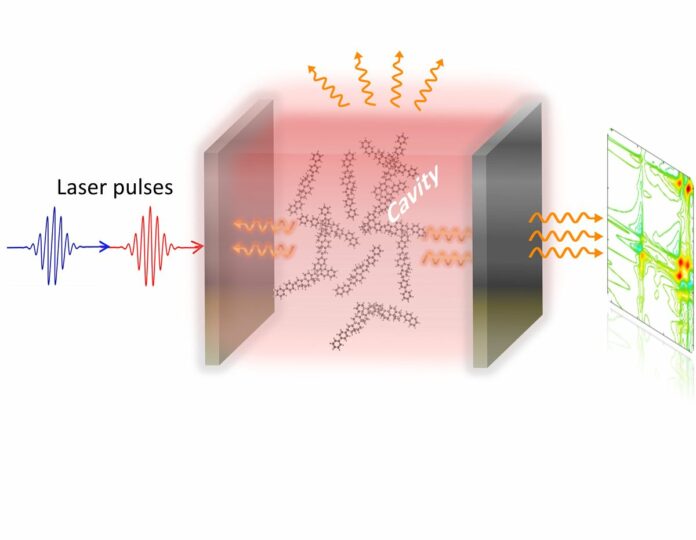Light-induced phases, one group of the recently discovered phases, have attracted much interest from scientists in the last ten years since they are thought to offer a viable platform for new solar panels, new chemical platforms, and a new route for contemporary quantum technologies.
A team from the City University of Hong Kong (CityU) led by a physicist recently created a new quantum theory that explains the “light-induced phase” of matter and forecasts its revolutionary functions. The new theory may completely alter the area of quantum photonics and quantum control at room temperature. It also makes possible several future light-based technologies, including optical communications, quantum computing, and light harvesting.
For light-harvesting devices, energy conversion, and quantum computing, the ultrafast activities of photoactive molecules, such as electron transfer and energy redistribution, typically occurring at the femtosecond scale (10–15s), are of utmost relevance.
However, there are many unknowns in the studies on these processes. Since most theories on light-induced phases are constrained by time and energy scales, they cannot explain how short laser pulses affect molecules’ transient characteristics and ultrafast processes. These place an essential restriction on the study of light-induced phases of matter.
To overcome these challenges, Dr. Zhang and his colleagues created the first-ever unique quantum theory for the optical signals of the light-induced phases of molecules. The new theory circumvents the limitations of earlier theories and methods by using mathematical analysis and numerical simulations to explain the dynamics of molecules in their excited states and their optical properties in real time.
The novel theory combines ultrafast spectroscopy with cutting-edge quantum electrodynamics. It explains the nonlinear dynamics of molecules using contemporary algebra, laying the groundwork for cutting-edge technical applications for lasers and material characterization. Thus, it presents novel optical detection and quantum metrology principles.
Dr. Zhang Zhedong, Assistant Professor of Physics at CityU, who led the study, said, “What is particularly fascinating about our new theory is that the cooperative motion of a cluster of molecules shows a wave-like behavior, which spreads over a distance. This was not achievable in conventional studies. And this collective motion can exist at room temperature instead of only in an ultralow, cryogenic temperature previously. This means that precise control and sensing of particle motion may be feasible at room temperature. This may open new research frontiers, such as collective-driven chemistry, that could potentially revolutionize the study of photochemistry.”
The development of next-generation light-harvesting and -emitting devices, as well as laser operation and detection, is made easier by the new quantum theory. Bright light emission may result from the coherence from molecular cooperativity caused by light. The research’s spectroscopic probes of the light-induced phase of matter can be used to take advantage of quantum metrology and next-generation optical sensor technologies.
At a larger scale, the light-induced phases may enable various novel light-based interdisciplinary applications, such as optical communications, biological imaging, control of chemical catalysis, and designating light-harvesting devices in an energy-efficient manner.
In the near future, the researchers plan to explore the light-induced phases and their effect on quantum materials and develop new spectroscopic techniques and detection in the context of quantum entanglement.
Journal Reference:
- Zhedong Zhang, Xiaoyu Nie, Dangyuan Lei, and Shaul Mukamel. Multidimensional Coherent Spectroscopy of Molecular Polaritons: Langevin Approach. Physical Review Letters. DOI: 10.1103/PhysRevLett.130.103001
